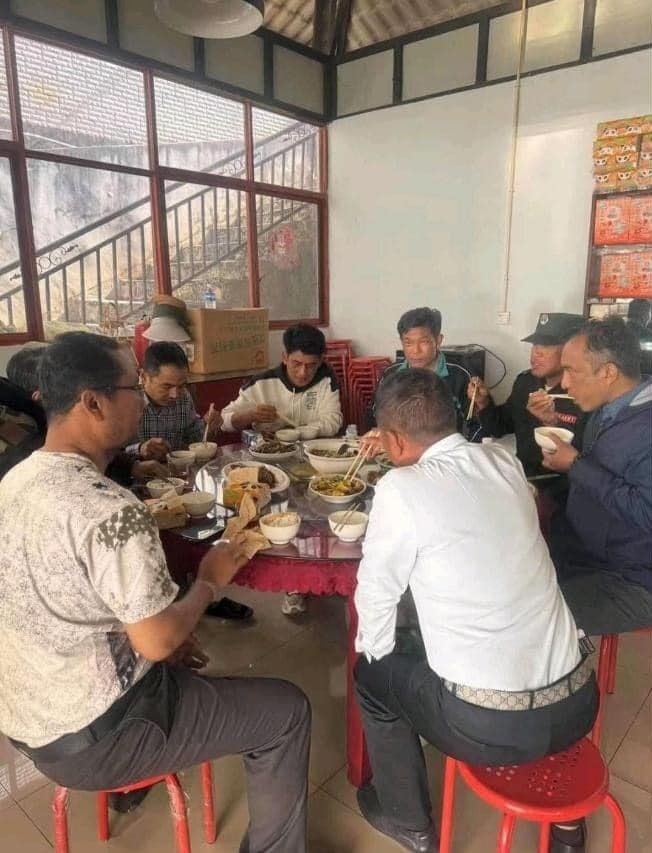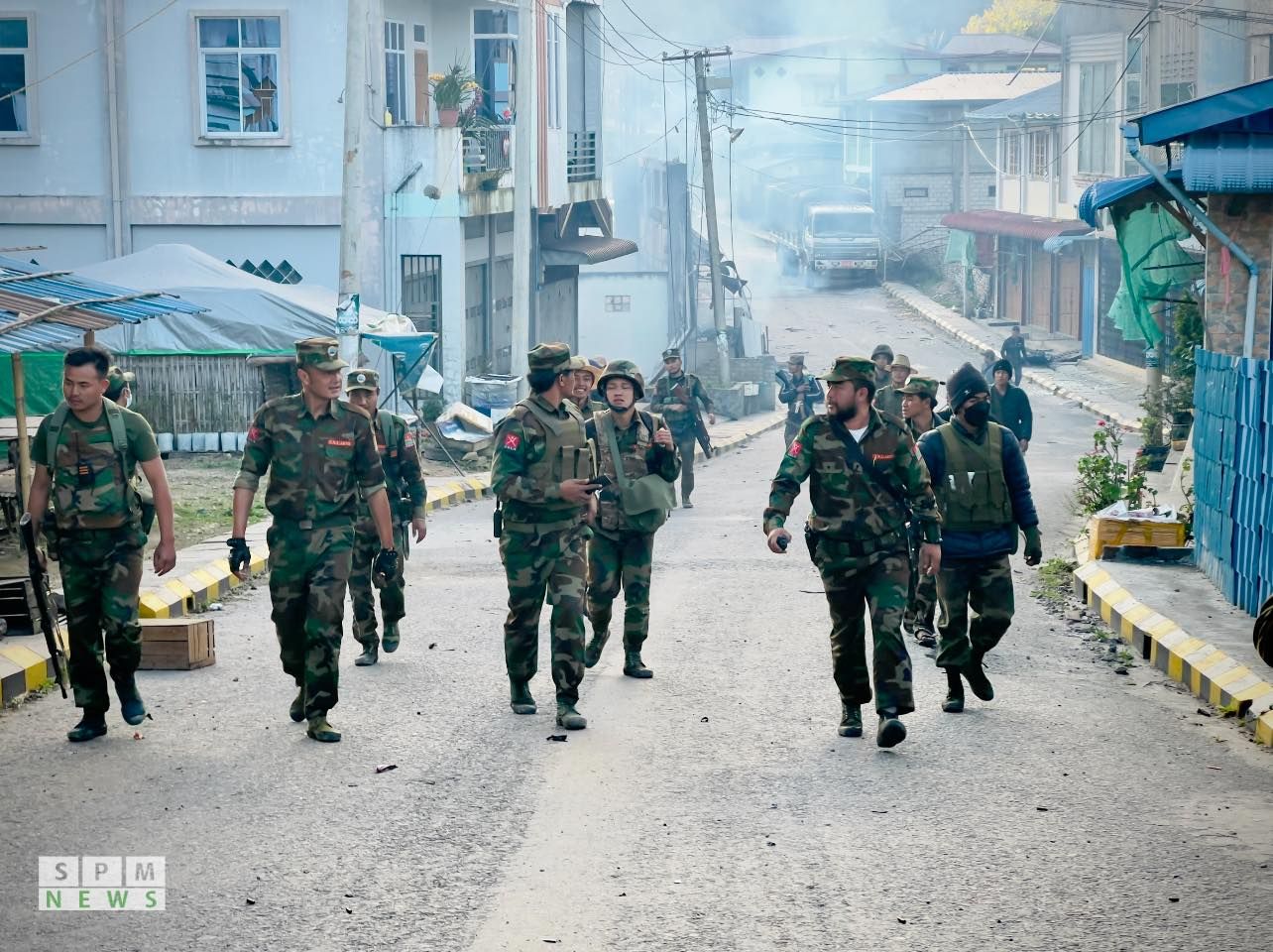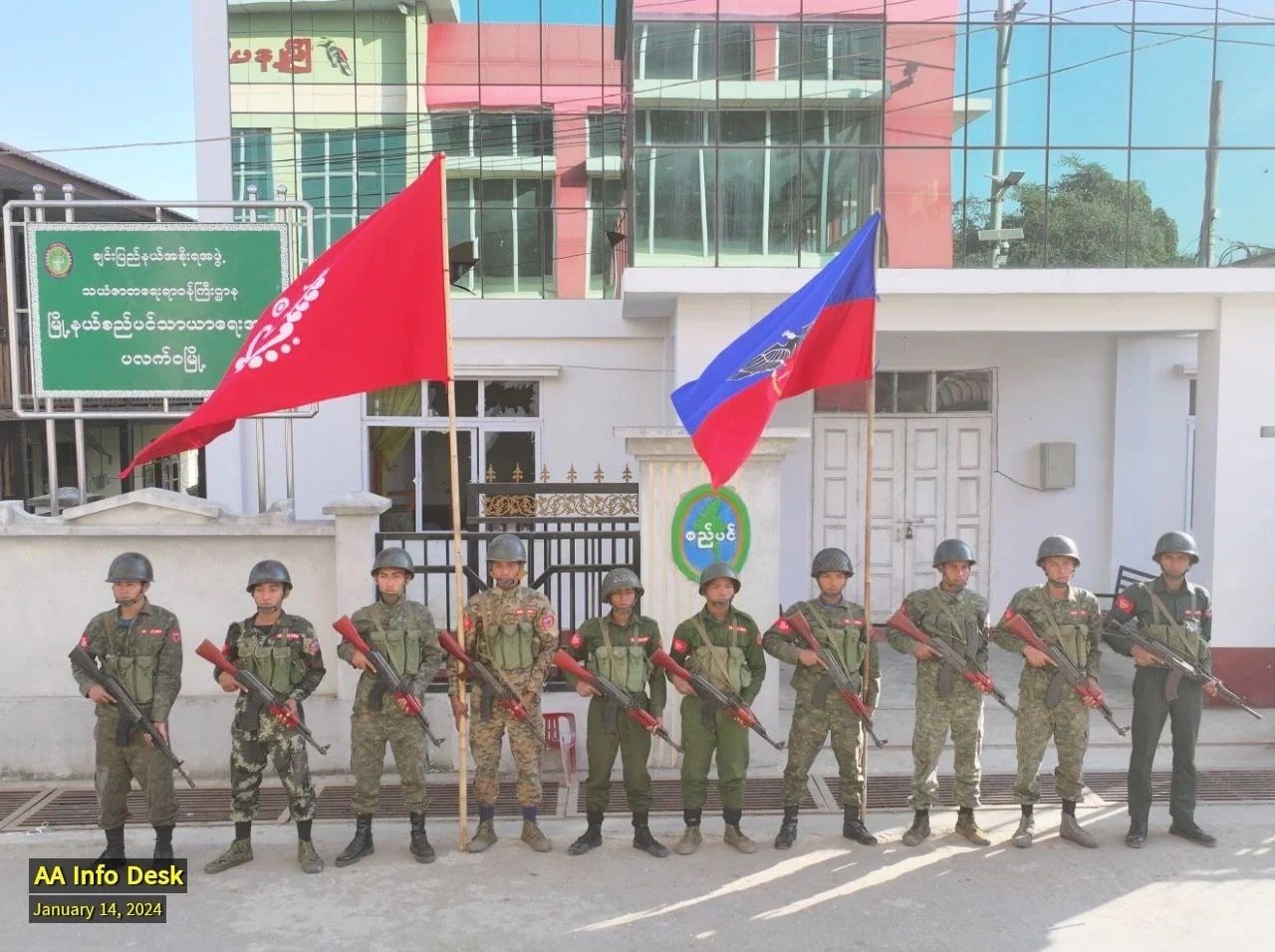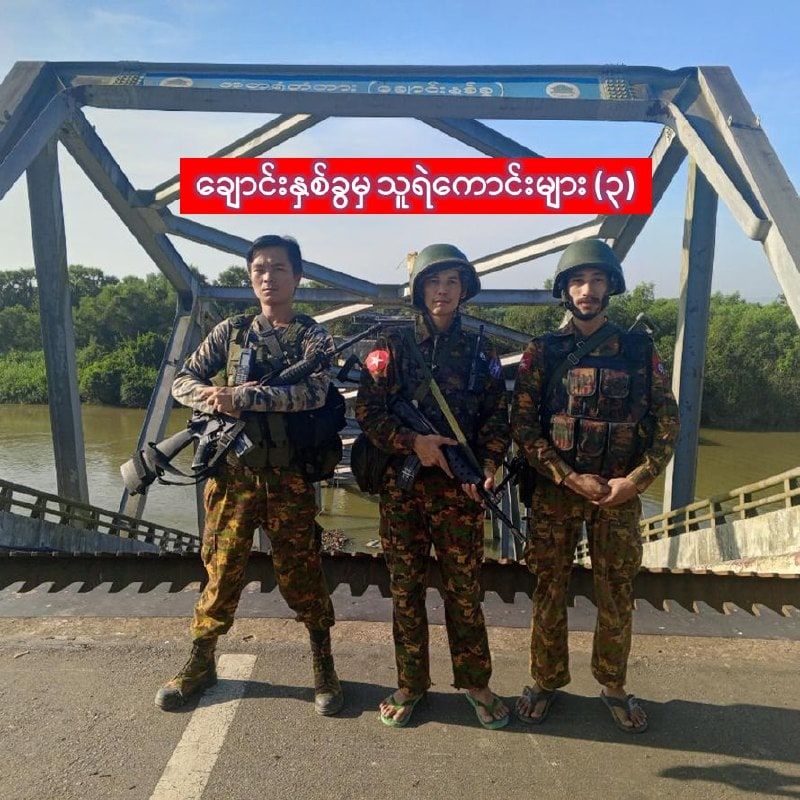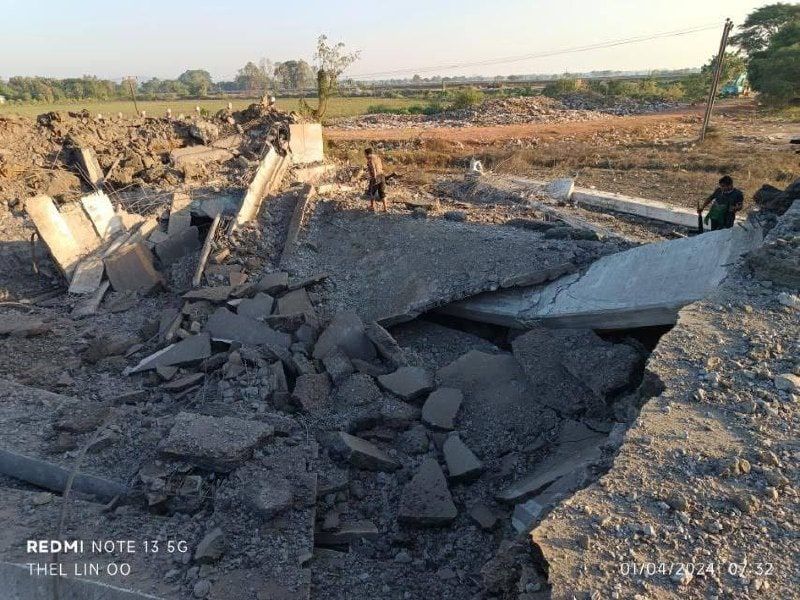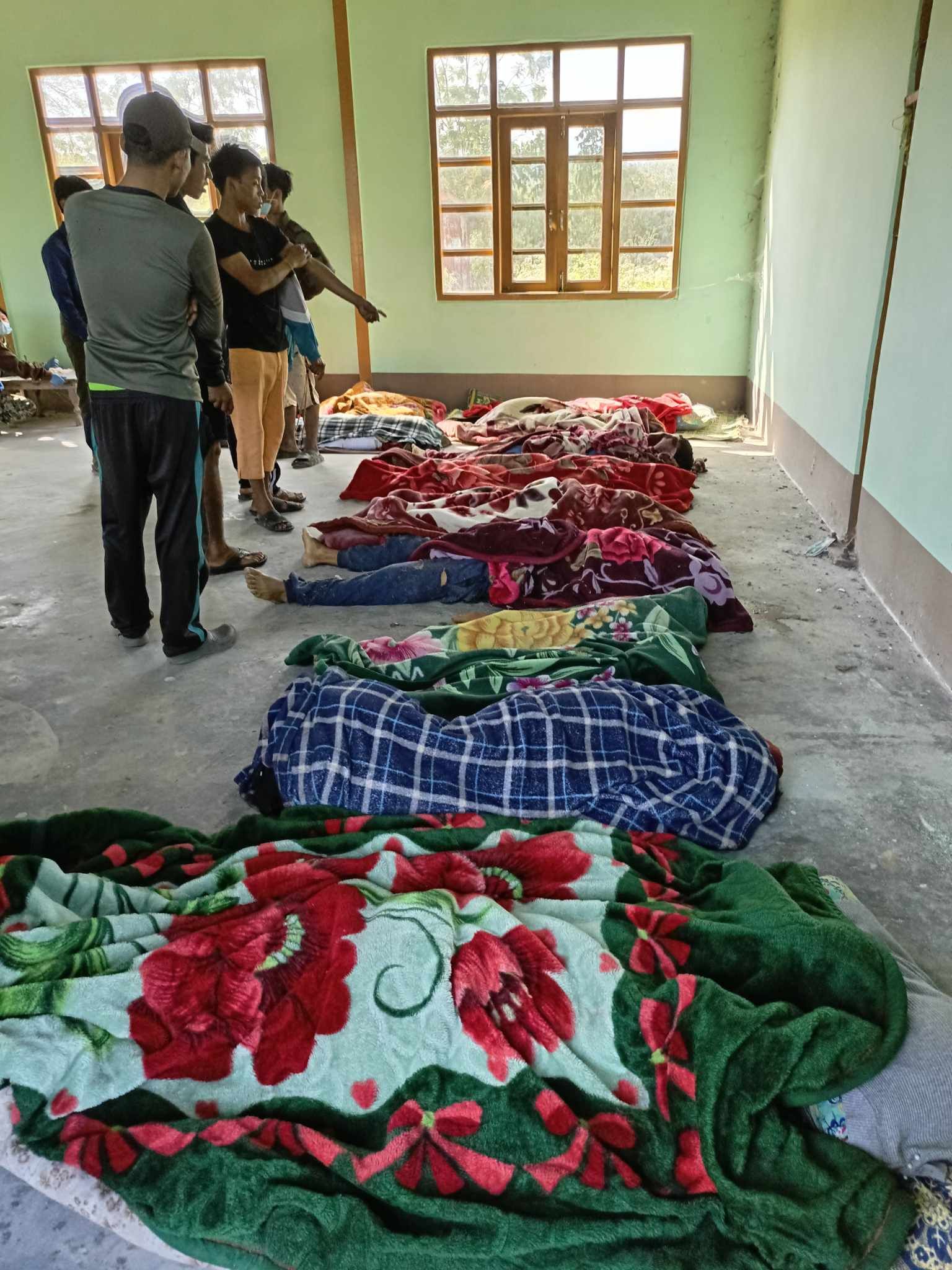Myanmar conflict update
Problems extend beyond battlefield for Myanmar’s battered regime
Poor decision-making and an inflexible strategy are compounding the junta’s losses and driving discontent among army commanders.
By Morgan Michaels
Graphics by Brody Smith
Published January 2024
On 5 January, the Myanmar National Democratic Alliance Army (MNDAA) accepted the conditional surrender of the Laukkaing Regional Operations Command, giving it control of Laukkaing city, the prime objective of the joint anti-junta Operation 1027. One hundred kilometres to the west, the Ta’ang National Liberation Army (TNLA) has expelled junta forces from large towns and strategic roadways and gained near-total control of its primary area of operation. On the other side of the country, in Rakhine State, the Arakan Army’s (AA) campaign has accelerated in recent weeks, resulting in the rapid retreat of junta forces. And yet the impact of Operation 1027 is not confined to the battlefield, with the junta’s failure to stem its losses stirring deep dissatisfaction among its ranks according to sources close to the army and regime.
After spending three years on the sidelines, the Brotherhood Alliance, comprising the MNDAA, TNLA and AA, entered the post-coup war by launching Operation 1027 along the border with China in late October 2023. The blitz has expelled the regime from swathes of territory in the country’s north and inspired fresh attacks by opposition forces elsewhere. This month’s conflict update explores recent battlefield developments and analyses what went wrong for the regime’s forces in northern Shan State, where a new ceasefire came into effect on 11 January.
Junta missteps compound losses
As early as the second week of Operation 1027, Chinese officials acting as mediators suggested to the junta that it allow the MNDAA and TNLA to administer their own areas. The junta refused to concede territories it had not yet lost, like Laukkaing, and opted to fight it out instead. But the army ultimately failed to launch a counter-offensive or utilise available resources to defend its remaining positions. Though some battalions pivoted to mobile defense, many were left to guard exposed or isolated hilltop positions and so they were overrun, partially destroyed, or forced to surrender. Sources indicated that Naypyidaw’s inflexible strategy and the avoidable losses that followed have harmed morale among ground commanders.
The army’s withdrawal from Laukkaing on 5 January forfeited its greatest bargaining chip, yet it is unclear what, if anything, the junta received in exchange. According to various reports, the second round of talks held between 22 and 24 December had not produced a concrete agreement on the fate of Laukkaing. Surprisingly, the withdrawal took place before all sides convened in Kunming, China for a third round of talks on 10 and 11 January. This suggests that the city’s commanding officers may have prematurely withdrawn, leaving the junta with little to no leverage over its opponents. Media reported that the six brigadier generals were detained upon arriving in Lashio after the withdrawal. A source confirmed that at least five of them are facing court martial. The ceasefire deal struck on 11 January appeared to freeze the conflict along the new lines of demarcation that the Brotherhood won by force, so the regime’s acceptance is indicative of a decisive defeat, rather than a compromise.
Moreover, the junta can no longer access the border area in Shan State, raising the prospect of a long-term inability to tax a significant portion of the country’s trade with China. Its losses now include large towns like Hseni and Kutkai, which were not necessarily primary objectives for the Brotherhood Alliance. By refusing to bargain, the junta has lost more territory, depleted its fighting strength, allowed the capture of large arms and munitions stockpiles, and precipitated a crisis of confidence among its officer corps. Several sources close to the regime and army have indicated widespread dissatisfaction with Senior General Min Aung Hlaing, and even consideration of a leadership change among at least some internal elements.
While the territorial losses inflicted by Operation 1027 do not pose an existential threat to the regime, the embarrassment of the defeat and its impact on morale could potentially generate some internal instability. Yet any effort to sideline Min Aung Hlaing will be difficult. Since the coup, the junta leader has carefully consolidated his power by removing potential rivals from important positions (the regime announced a reshuffle of several senior officials immediately after the fall of Laukkaing). Although Min Aung Hlaing has lost respect, unseating him would also equate to challenging the long-standing norms of the Tatmadaw, which most senior officers still view as sacrosanct. Moreover, it would be hard for any reform-minded faction to initiate a negotiated transition, given how deeply the regime is reviled both at home and abroad.
